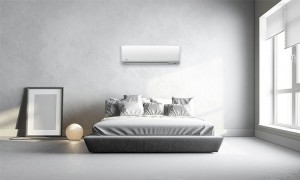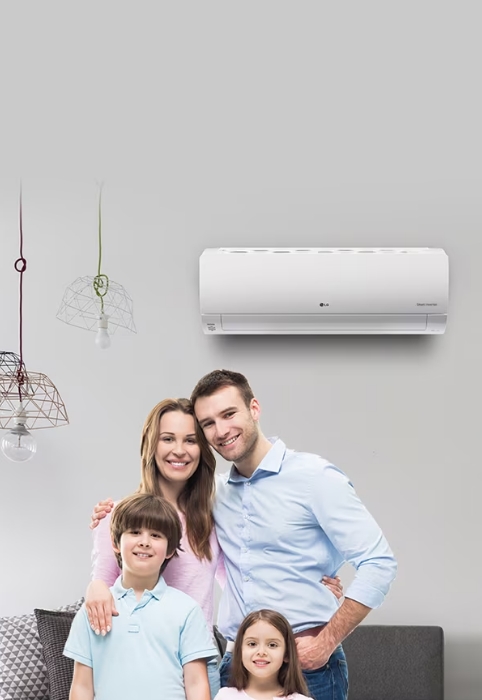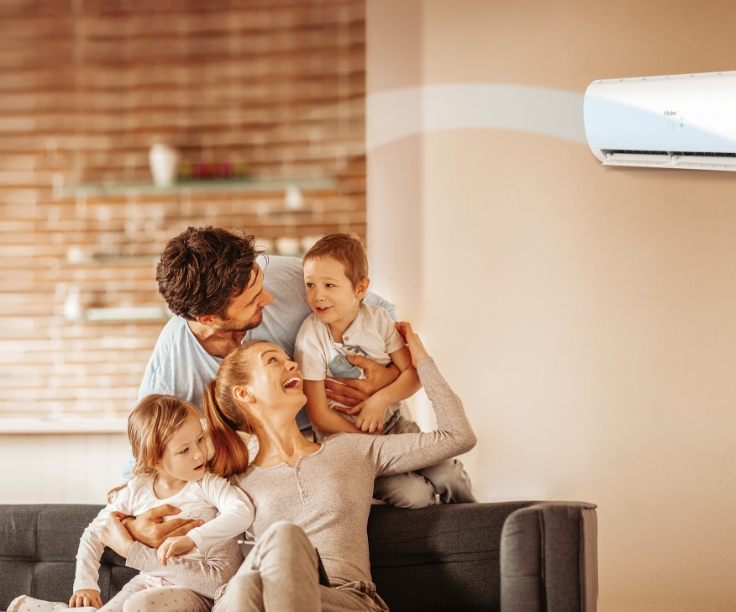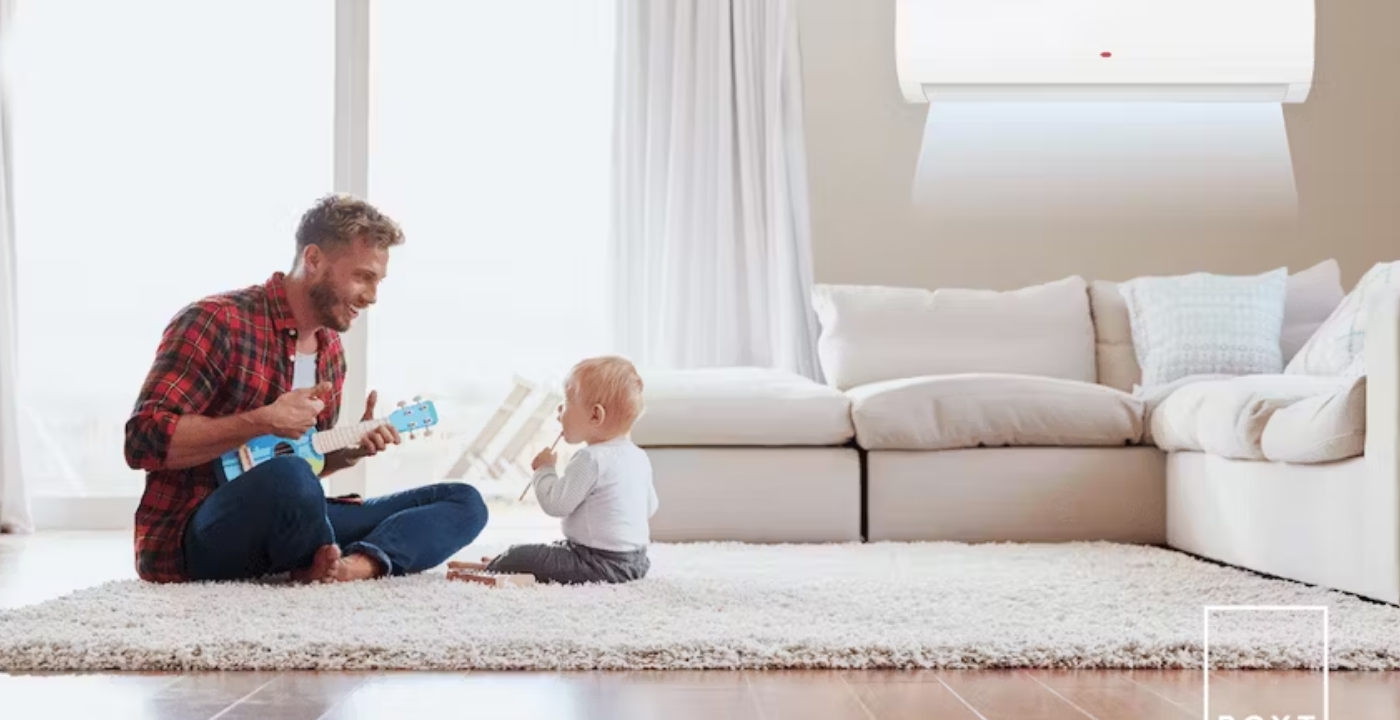Room air conditioner

How room air conditioners operate
Smaller room air conditioners (i.e., those drawing less than 7.5 amps of electricity) can be plugged into any 15- or 20-amp, 115-volt household circuit that is not shared with any other major appliances. A larger room air conditioner (i.e., those drawing more than 7.5 amps) need their own dedicated 115-volt circuit. The largest models require a dedicated 230-volt circuit.
ENERGY EFFICIENCY OF A ROOM AIR CONDITIONER
A room air conditioner efficiency is measured by the energy efficiency ratio (EER). The EER is the ratio of the cooling capacity (in British thermal units [Btu] per hour) to the power input (in watts). The higher the EER rating, the more efficient the air conditioner. National appliance standards require room air conditioners to have an energy efficiency ratio (EER) ranging from 8.0–9.8 or greater, depending on the type and capacity, and ENERGY STAR® qualified room air conditioners have even higher EER ratings.
The association of home appliances manufacturer reports that the average EER of room air conditioners rose 47% from 1972 to 1991. If you own a 1970s-vintage room air conditioner with an EER of 5 and you replace it with a new one with an EER of 10, you will cut your air conditioning energy costs in half.
When buying a new ROOM AIR CONDITIONERS, look for units with an EER of 10.0 or above. Check the EnergyGuide label for the unit, and also look for room air conditioners with the ENERGY STAR label.
SIZING AND SELECTING A ROOM AIR CONDITIONER
At almost everything in life, you’ll find out that size does matter, even when purchasing your room air conditioner. There are few things you have to put into your calculation when making that decision, for instance the required cooling capacity for a room air conditioner depends on the size of the room being cooled — room air conditioners generally have cooling capacities that range from 5,500 Btu per hour to 14,000 Btu per hour. A common rating term for room air conditioners size is the “ton,” which is 12,000 Btu per hour.
Now when we say size does matter at almost everything in life, we don’t necessarily mean bigger is better. What we mean is that you should cut your coat according to your size. Proper sizing is very important for efficient room air conditioners. A bigger unit is not necessarily better because a unit that is too large will not cool an area uniformly. The oversized unit will also cool the room to its thermostat set point and shut down prior to properly dehumidifying the room, leaving the area feeling damp or “clammy.” A small unit running for an extended period operates more efficiently and is more effective at dehumidifying than a large unit that cycles on and off too frequently.
Based on size alone, an air conditioner generally needs 20 Btu for each square foot of living space. Other important factors to consider when selecting an air conditioner are room height, local climate, shading, and window size.
Another thing to keep in mind when making this decision is to verify that your home’s electrical system can meet the unit’s power requirements. Room units operate on 115-volt or 230-volt circuits. The standard household receptacle is a connection for a 115-volt branch circuit. Large room units rated at 115 volts may require a dedicated circuit and room units rated at 230 volts may require a special circuit.
If you are mounting your air conditioners near the corner of a room, look for a unit that can direct its airflow in the desired direction for your room layout. If you need to mount the air conditioner at the narrow end of a long room, then look for a fan control known as “Power Thrust” or “Super Thrust” that sends the cooled air farther into the room.
Other features to look for include:
- A filter that slides out easily for regular cleaning
- Logically arranged controls
- A digital readout for the thermostat setting
- A built-in timer.
INSTALLING AND OPERATING YOUR ROOM AIR CONDITIONER
You know what they say; those who fail to plan have planned to fail. Therefore a little planning before installing your air conditioner will save you energy and money. The unit should be level when installed, so that the inside drainage system and other mechanisms operate efficiently.
Don’t place lamps or televisions near your air-conditioner’s thermostat. The thermostat senses heat from these appliances, which can cause the air conditioner to run longer than necessary before cooling your home.
Set your room air conditioners thermostat as high as is comfortably possible in the summer this will help the air conditioner overcome the presence of heat in your room quicker saving you energy and more money. The less difference between the indoor and outdoor temperatures, the lower your overall cooling bill will be. Don’t set your thermostat at a colder setting than normal when you turn on your air conditioner; it will not cool your home any faster and could result in excessive cooling and unnecessary expense.
Set the fan speed on high, except on very humid days. When humidity is high, set the fan speed on low for more comfort. The low speed on humid days will cool your home more effectively and remove more moisture from the air because of slower air movement through the cooling equipment.
If you have decided to install your air conditioner outside your window, consider using an interior fan in conjunction with your window air conditioner to spread the cooled air through your home without greatly increasing electricity use.
In the extreme dry heat we experience in South Australia, keeping your home cool all summer long is a top priority, and now is the ideal time to start thinking about how you will accomplish this. There are many benefits associated with a split system air conditioner, and you may find that this is the right option for you. You can call Rite price Heating Cooling at 1300Cooling for a free price quote for your new air conditioner and to inquire about the installation process.







